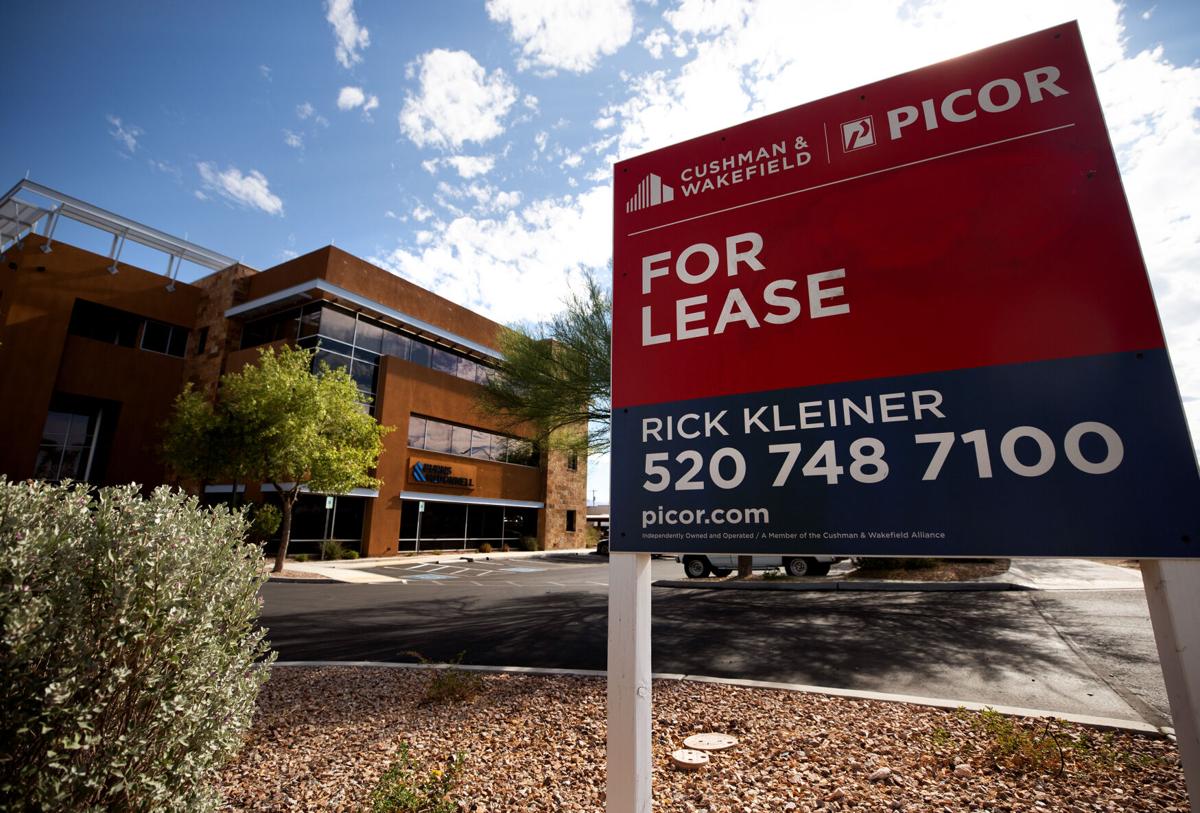Older office buildings across Tucson could soon start disappearing as vacancy rates remain high and owners struggle to find new tenants.
The exodus from traditional offices that began with the pandemic is ongoing and many employers have either embraced hybrid work schedules or turned out the lights for good .
While newer offices with amenities in desirable locations are still leasing well, such as along East Skyline Drive, securing a loan to build new offices is a challenge.
Tucson recorded five consecutive quarters with no new office construction, in part because of the uncertainty of future demand and the fact that banks aren’t lending for speculative development.
The vacancy rate of office space in the Tucson area is 14.5%, compared to 11% at the end of 2019.
And even though some employers retain office space, it’s sometimes with a fraction of the employees using the work space.
In 2019, the national rate of employees working from home was about 5%. After rising to 60% at the onset of the pandemic, it currently stands at 25%.
“I don’t know when we’ll build anything new,” said David Montijo, an office broker with brokerage firm CBRE. “It’s hard to make an office building work in Tucson, Arizona.”
As employers get creative with perks like flexible work schedules, landlords are also working with tenants to offer shared common spaces for hybrid workers or smaller offices. The one outlier is the medical sector, where employees still need to be in a traditional office space for appointments.
Landlords and employers need to work together to make working away from home desirable, Montijo said.
“People will have to modernize and create a destination where it’s nice to go, so employees are not begrudgingly going to work,” Montijo said. “I’m sure there are jobs that you can do by yourself, but collaboration is the reason to work together.”
Some owners are trying to convert part of their excess space to residential or self-storage units, which requires both retrofitting and rezoning.
“There aren’t that many options,” Montijo said. “You can’t add a manufacturing facility near a neighborhood.”
Eastern cities are finding creative ways to fill vacant office buildings.
Some are being rented out to movie studios to film office scenes, others are allowing indoor cultivating of cannabis and still others are inviting the fastest-growing sport to create indoor, air-conditioned pickleball courts.
‘Some signs of life’
Unlike the months following the pandemic lockdowns, there are workers who have returned to the office.
“The office market has some signs of life but they’re very specific in terms of types of requirements and size of requirements,” said Rick Kleiner, an office broker with Picor commercial realty. “The 50,000-square-foot call centers, for example, they’re not coming back.”
Once packed with people working shoulder-to-shoulder, call centers have essentially disappeared because many of those calls are now handled by home workers.
For example, employees of the former Comcast call center, next to Tucson Mall, now all work remotely. That means the 200,000-square-foot building that was extensively renovated and garnered national prestige sits empty.
“Now there’s been one security guard there for the past two years,” Kleiner said.
There are few options for office building owners whose facilities are older, not updated or unsuitable for medical uses.
Many of those older office complexes are situated along major streets and transit, so the conversion to residential developments might have made sense before the price of everything shot up.
“Perhaps if inflation is down and we get some relief on interest rates, maybe the smart people out there that know how to do that will do so,” Kleiner said. “That will help with taking some of these excess building and perhaps getting them converted.”
Retail or recreational uses for those buildings may not be an option due to their age and configuration.
Many will meet the fate of a wrecking ball.
“Eventually, landlords will decide there is no upside to keeping the building and turn them over to the bank,” Kleiner said. “Buildings that are obsolete will be demolished because they’ll be of such limited value.”
Yes, working from home burnout is a real thing that affects people who are new to working at home.





